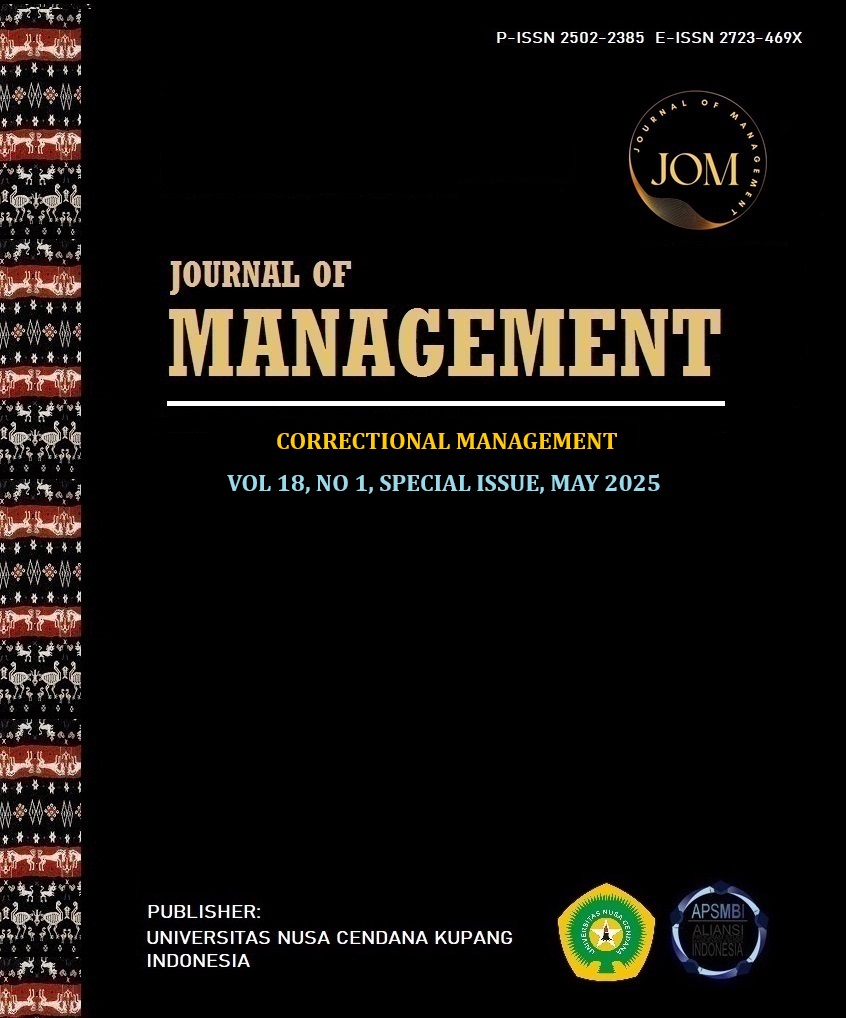THE ROLE OF COMMUNITY COUNSELLORS IN DEALING WITH COMMUNITY STIGMA TOWARDS CORRECTIONAL CLIENTS AT BAPAS CLASS I CIREBON
Abstract
The thickening of community stigma can hinder the integration of former prisoners into the community environment. This study aims to determine the role of community supervisors in dealing with and minimizing community stigma for correctional clients, in addition to identifying what obstacles there are in dealing with community stigma for correctional clients. The research method used in this research is a qualitative research method that utilizes in-depth interviews and observations. The results of the study found that the description of community stigma to correctional clients in the work area of the Cirebon Class I Correctional Centre covering five cities and regencies is indeed true, as evidenced by people who have concerns, suspicions, and misconceptions, and some words should not be from the community to clients. In addition, there is no role for government agencies or, in this case, the correctional center, related to the problem of community stigma.
Keywords: Stigma; Correctional Clients; Community Supervisors
Downloads
References
Bapino, S. R., Mohede, N., & Wulur, N. (2022). Perlindungan Hak Asasi Mantan Narapidana Terhadap Stigma Negatif Masyarakat Ditinjau Dari UU No. 39 Tahun 1999 Tentang Hak Asasi Manusia. Lex Administratum, 10(5).
Horoepoetri, Arimbi, & Santosa, A. (2003). Peran Serta Masyarakat Dalam Pengelolaan Lingkungan. Walhi.
Putrie, K. A., & Prasetya, B. E. A. (2021). Kecemasan terhadap Stigma Sosial untuk Kembali ke Masyarakat pada Mantan Narapidana Perempuan Tindak Pidana Penipuan. Jurnal Ilmiah Bimbingan Konseling Undiksha, 12(2), 131–142. https://doi.org/10.23887/jibk.v12i2.33852
Salma, S. P.,, I. N. A. (2023). Gambaran Stigma Pada Mantan Narapidana Teroris. Jurnal Fusion, 3.
Sudirman, K. A., & Sulhin, I. (2019). Mekanisme Mengatasi Stigma di Kalangan Klien Pemasyarakatan (Studi Kasus Klien Narkoba di Balai Pemasyarakatan Kelas I Jakarta Selatan). Journal of Correctional Issues, 2(2), 53–75.

 Naufal Adhansyach(1*)
Naufal Adhansyach(1*)



